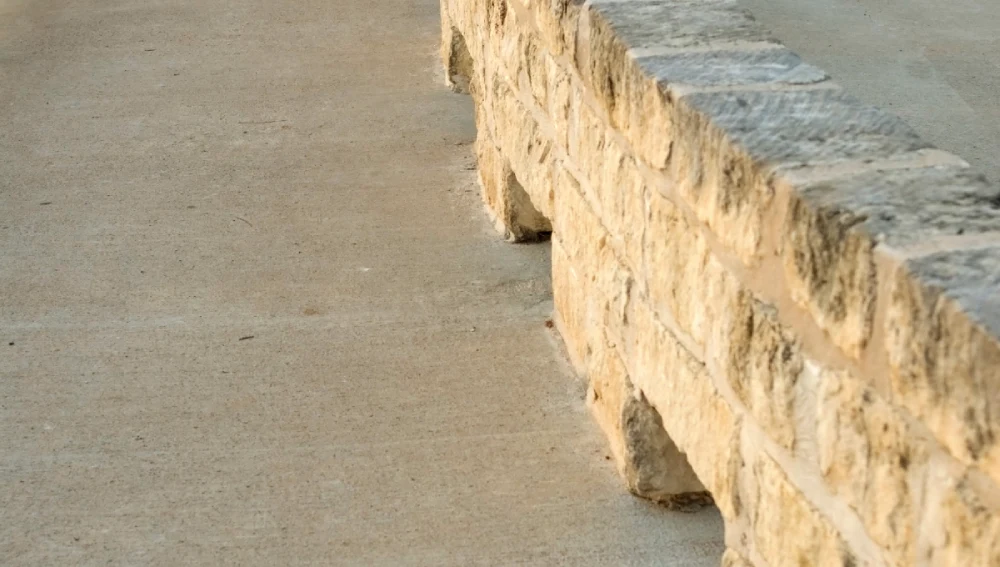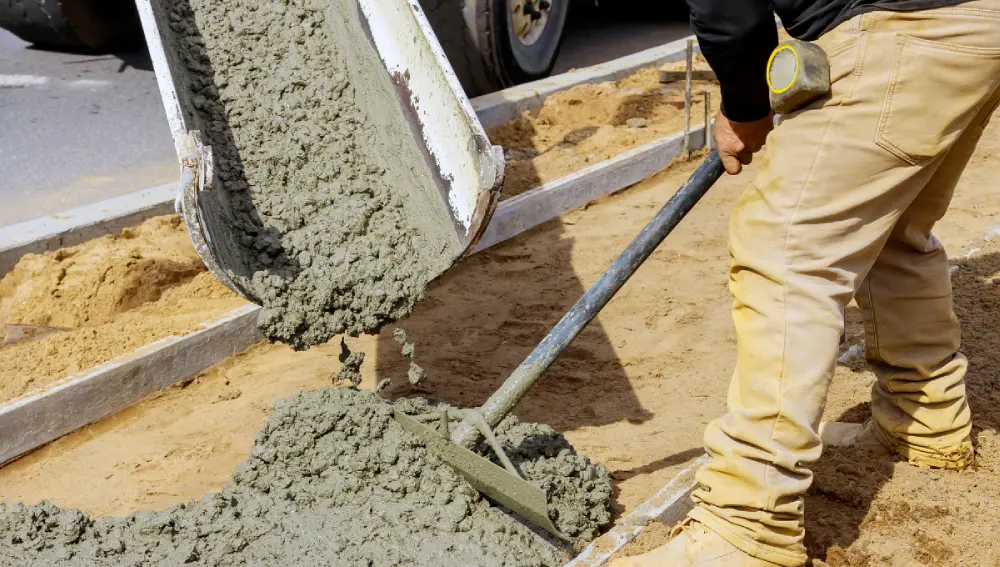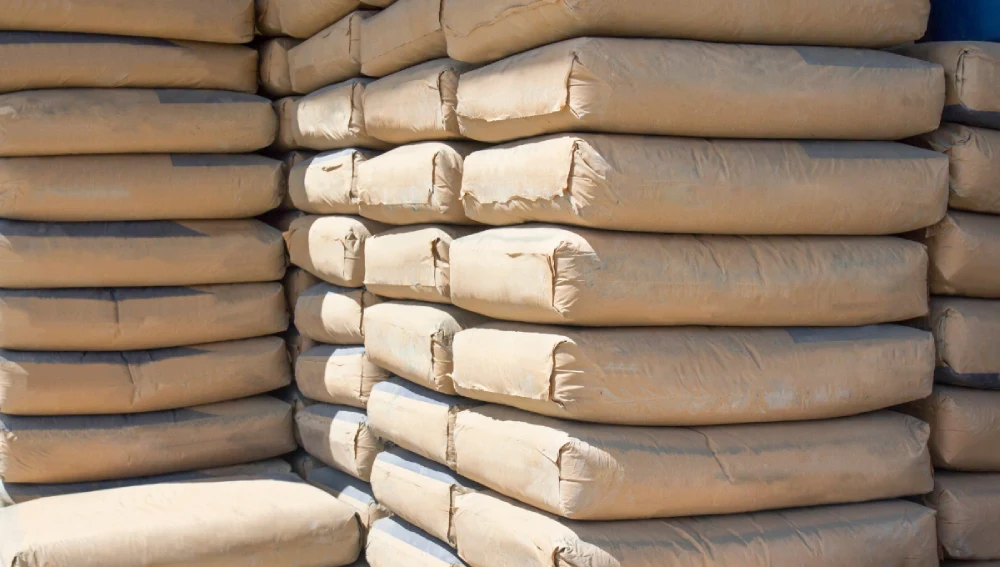Low-heat cement is an essential material used in the construction industry,mainly in large-scale infrastructure projects. It is well known for its hydration properties and low-heat generation. This blog provides details regarding low-heat cement and its uses.
What is Low Heat Cement?

Low-heat cement is a type of Portland cement, characterized by low heat and hydration properties. Here the low heat and hydration properties refer to the release of less amount of heat during the reaction between water and cement.
In standard Portland cement, this reaction can release comparatively more heat, which can lead to thermal cracking, mainly in large concrete pours. Low-heat cements are primarily formulated to release less heat, making them ideal for large concrete structures like dams, bridges, and foundations.
Chemical Composition
Low-heat cement is made to achieve lower heat of hydration. Its primary components are as follows and as compared with ordinary Portland cement (OPC):
- Tricalcium silicate is lowered by about 20 to 30% compared to OPC (40 to 50%).
- Dicalcium silicate is increased by about 40 to 50% compared to OPC (20 to 30%).
- Tricalcium aluminate is limited to less than 5% compared to OPC (10%).
- Tetracalcium aluminoferrite remains the same as OPC (8 to 12%).
These changes can help in reducing the heat of hydration, which normally ranges from 60 to 80 cal/g in low heat cement compared to 90 to 100 cal/g in OPC.
The reactions normally involved in the hydration process are,
C3S + H2O → C-S-H + Ca(OH)2 + Heat
C2S + H2O → C-S-H + Ca(OH)2 + Heat
The decrease in the Tricalcium silicate and dicalcium aluminate helps reduce the heat of hydration. The heat of hydration for low-heat cement normally ranges around 260 J/g. This is important in mass concrete pours as there will be temperature differences that can lead to internal stress forming cracks.
Properties of Low-Heat Cement

Some of the properties of low-heat cement and their standard values are given:
- Specific Surface Area – 250 m2/kg Min
- Initial Setting- minimum 60 minutes
- Final Setting – 600 minutes to 720 min and up to a maximum of 12 hours
- Compressive Strength at 7d – 13.0 MPa Min
- Compressive Strength at 28d – 42.5 MPa Min
- Breaking Strength at 7d – 3.5 MPa Min
- Breaking Strength at 28 d – 6.5 MPa Min
- Hydration heat at 3d – 230 KJ/kg Max
- Hydration heat at 7d – 260 KJ/kg Max
- Hydration heat at 28d – 314 kJ/kg Max
Heat of Hydration
The lowered Tricalcium silicate quantity and increased dicalcium silicate amount can produce lower heat of hydration. It is crucial for large concrete pours as their internal temperature can rise and cause cracking.
Setting Time
Low heat cement has a longer setting time when compared to OPC. The initial setting time varies from 60 minutes to 90 minutes and the final setting time varies from 10 hours to 12 hours. This is helpful in large-scale projects and gives more time for the placement of concrete, thus reducing the risk of cold joints.
Strength Development in low-heat cement
The strength development in low-heat cement happens at a slower pace compared to ordinary Portland cement. This means that while it takes longer for the concrete to gain strength initially, the final strength achieved is comparable to that of ordinary Portland cement. Normally, the 28-day compressive strength of low-heat cement ranges from 30 to 50 MPa, depending on the specific mix design and curing conditions.
The proper mix design may include a water and cement ratio of 0.35 to 0.45. Some supplementary cement materials like slag or fly ash can help in reducing the heat of hydration. Proper curing conditions like maintenance of mixture and temperature control are important for optimal strength development.
Uses of Low-Heat Cement
Construction of Dams
There is a need for a large amount of concrete for the construction of dams, which may produce a significant amount of heat. Hence the usage of low heat cement can decrease the peak temperature, preventing cracking or thermal stress. The Hoover Dam is an example for dam construction carried out using low-heat cement.
Large foundations
As large foundations need large concrete pours for their construction,the usage of low-heat cement can help ensure uniform temperature distribution. This reduces the differential thermal expansion and cracking. The foundations of skyscrapers and other large industrial structures can be considered as examples.
Bridge Piers and Decks
Bridges and decks need highly durable cement that can resist thermal cracking. Hence low-heat cement can be used for their construction. This provides necessary properties to ensure long-term structural integrity. Millau Viaduct in France is an example for construction using low-heat cement.
Retaining walls
Retaining walls are built to resist high lateral earth pressures. By using low-heat cement, these structures can be crack-free and also maintain their load-bearing capacity.
Nuclear power plants
Safety and durability are significant in nuclear power plants. Here,low heat cement can be used to build the containment structures. The reduced generation of heat can help maintain structural integrity in extreme conditions.
Advantages of Low-Heat Cement
Reduced Thermal Cracking
In mass concrete structures, using low-heat cement helps reduce the risk of thermal cracking. This is important for projects that include large volumes of concrete. Here, the rise in temperature because of hydration heat can be substantial.
Improved Durability
As the strength develops slower in low heat cement, it helps in long-term durability. The structures that are constructed using this cement may have less microcracking. Also, it helps in reducing forms of damage that endanger long term service life.
Improved Workability
The extended setting time can help in improved workability. This is more beneficial for large-scale projects, as concrete placement and finishing need time.
Cost-Effectiveness
Even if the initial cost may be slightly higher, the reduced risk can help in maintenance. The risks like thermal cracking are reduced and durability is increased. So using low-heat cement can help reduce the maintenance and repair costs for the lifetime of the structure.
Others
The other advantages include the resistance to sulfate corrosion and ruptures. They have good lasting performance and anti-seepage. The increased workability and pouring capacity can help in marine concrete works, hydraulic concrete works, and so on.
Conclusion
Low heat cement has become an essential material for large scale constructions. They provide benefits in technical and economic settings. They can reduce thermal cracking, and increase durability and workability. Their composition and characteristics give advantages of ensuring integrity and longevity. By understanding the uses and benefits of low-heat cement, engineers and construction professionals can improve the performance and lifespan of constructions.
FAQs
They are used to decrease the risk of thermal cracking. This is mainly in large concrete structures.
Low-heat cement is used in dams to help in balancing the temperature rise. It is because of the low heat of hydration of this type of cement.
The initial setting time is over 60 to 90 minutes. The final setting time ranges from 10 to 12 hours.
The primary components in low-heat cement are tricalcium silicate, tricalcium culminate, dicalcium silicate, and tetracalcium aluminoferrite.
Retaining walls are built using low-heat cement for preventing cracks and maintaining load bearing capacity under lateral earth pressure.

